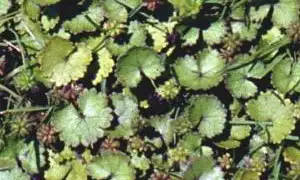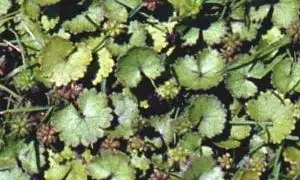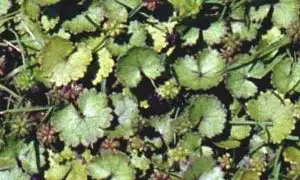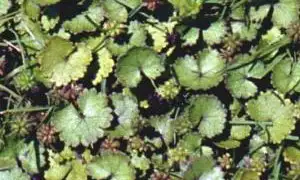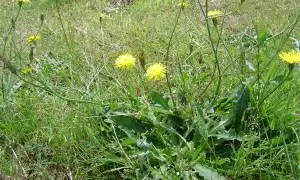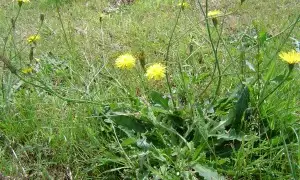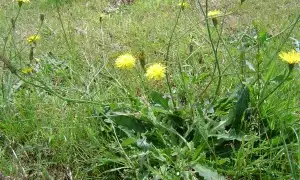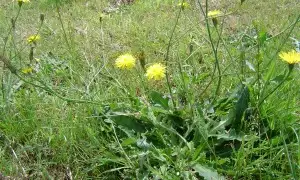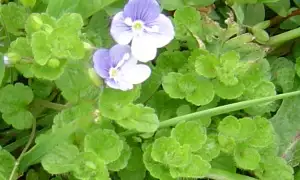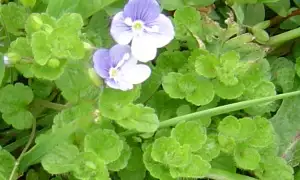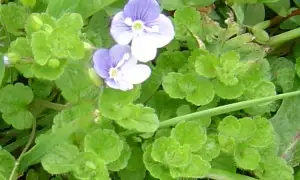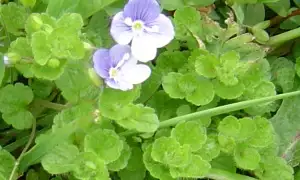Botanical name: Pilosella officinarum
Family name: Asteraceae
Overview
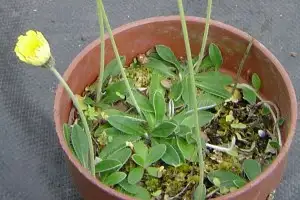
Mouse-ear hawkweed.
Mouse-ear hawkweed (formerly Hieracium pilosella and now Pilosella officinarum) is often more commonly known by its former genus name, Hieracium.
It is a major problem in the South Island high country pastures where it can form dense mats that exclude most other vegetation. Within the North Island, mouse-ear hawkweed is becoming more common in some areas, such as on the Volcanic Plateau and around Rotorua.
I have seen it occasionally on lawns in Palmerston North and Napier, so it isn’t just restricted to high country areas. It is very tolerant of low soil fertility and over-grazing, which is why it has become such a problem in the South Island high country.
Apart from being helped by over-grazing by sheep, rabbit plagues in these areas over the past decades have also helped it as these animals eat away all competing vegetation, leaving just the mouse-ear hawkweed to grow unhindered.
Distinguishing features
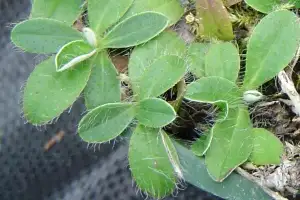
Mouse-ear hawkweed with long hairs growing on foliage.
Although it has a flower stem much the same as hawkbit (unbranched with no foliage and with a yellow flower head), it is easily differentiated from hawkbit because mouse-ear hawkweed has stolons.
These creeping stems allow the weed to creep along the ground, forming its characteristic mats of vegetation. The foliage and stems also have long hairs, much longer than those found in hawkbit. The underneath of the leaf is very pale in colour.
There are a number of other hawkweed species, some more common than others, though most grow in similar habitats to mouse-ear hawkweed and none tend to grow as aggressively.
Control
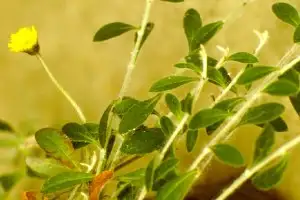
Mouse-ear hawkweed stems with yellow flowers.
Control of mouse-ear hawkweed is difficult because it usually grows in pastures where production levels are very low, and so it is difficult to economically justify spending too much per hectare to control it. Apart from this, selective herbicides give poor control of it, usually needing mixes that are damaging to any clovers managing to survive in these pastures.
To date, the best strategies have been to try out-competing it by increasing fertiliser inputs and trying to get pasture species growing strongly enough to smother the low-growing weed. Work has been conducted to find suitable biological control agents to attack the weed, with both disease and insect organisms being investigated. There is also more information on the AgPest website.
Similar species
Chickweed
Chickweed scrambles along the ground, has little white flowers, and a single line of hairs on the stem.
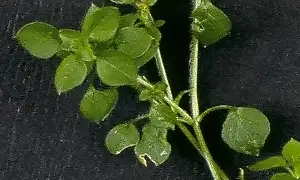
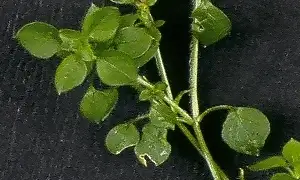
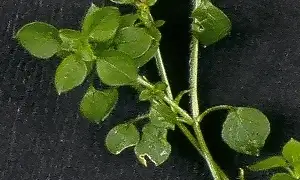

Hydrocotyle
The hydrocotyle genus has 15 species with similar biology and control that are difficult to differentiate.
